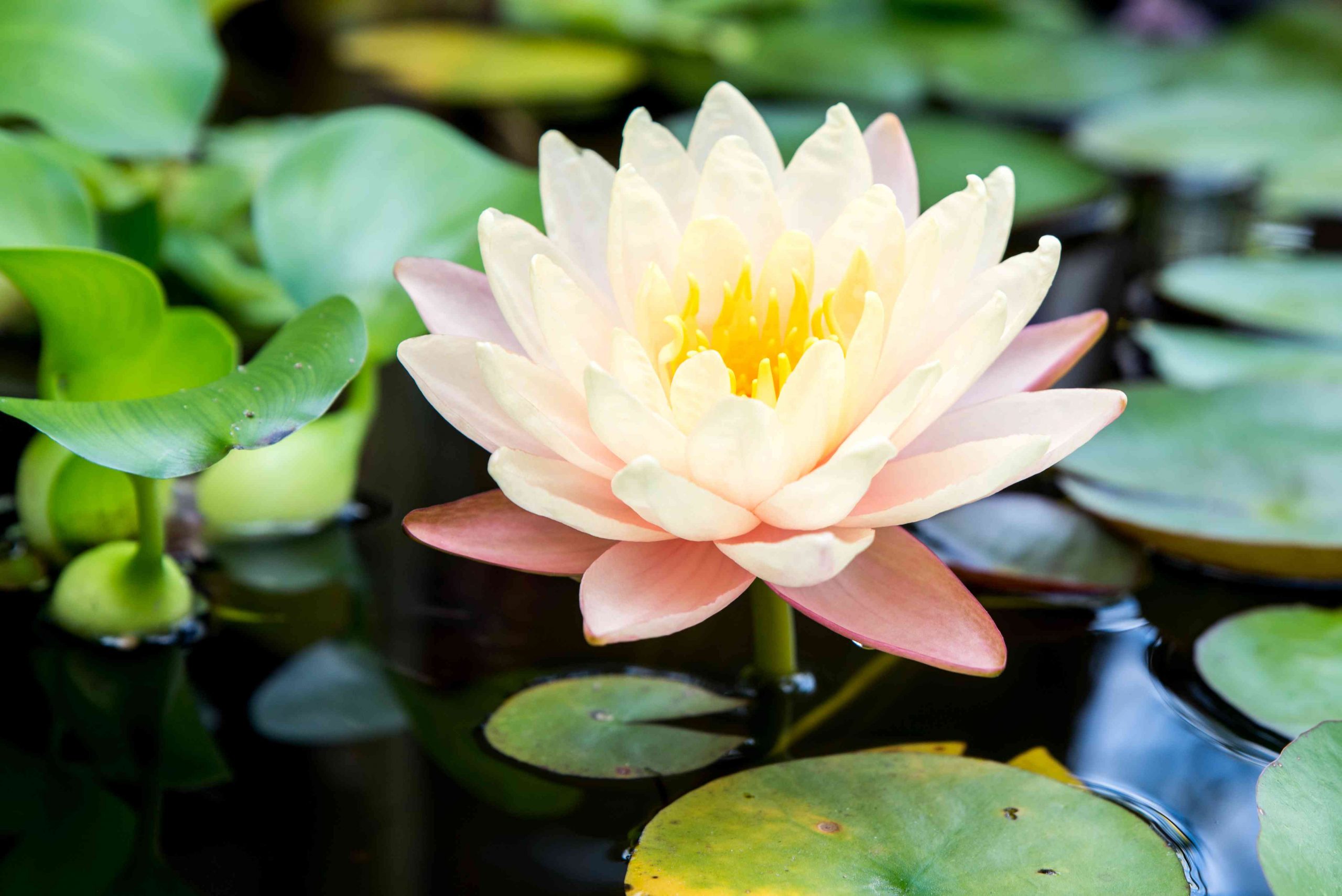Water lilies are stunning aquatic plants that can transform a backyard pond or water feature with their beautiful floating flowers. While water lilies are adapted to growing in water, they still require proper soil and nutrients to thrive. This leads many pond owners to ask – can I grow water lilies without soil?
The short answer is no. Water lilies require soil and fertilizer to sustain healthy growth and blooms over the long term. However, there are a few ways to provide soil and nutrients to water lilies planted directly in a rocky pond bottom.
Why Water Lilies Need Soil
Water lilies are not like fully aquatic plants that can live entirely submerged in water. Their roots need access to nutrients and oxygen diffused through soil in order to grow properly
Key reasons water lilies require soil include
- Their roots absorb nutrients like nitrogen and phosphorus from soil. Without soil lily roots would be starved for nutrients.
- Soil anchors the plants in place at the bottom of the pond. Otherwise they would float away.
- Soil provides beneficial bacteria and allows gas exchange to the roots.
- The soil helps insulate roots and moderates temperature fluctuations.
While a few other aquatic plants like anacharis can survive without soil, water lilies simply will not last long term without the sustenance soil provides.
Trying to Plant Water Lilies Without Soil
Some pond owners experiment with planting water lilies directly into a gravel or rocky pond bottom without any soil at all. Unfortunately, this technique does not work well.
Here is what happens when you try to grow water lilies without soil:
- At first, the lily may appear healthy, surviving on the nutrients it stored from being grown on land. But within a few weeks, the plant will show signs of nutrient deficiencies without soil to feed from.
- The lily will likely detach from the pond bottom without soil to anchor it, causing it to float and shift around randomly.
- Without insulation from the soil, the lily’s roots are subject to temperature changes in the water, which can damage the plant.
- Gas exchange cannot occur normally through just rocks or gravel. The lily’s roots essentially suffocate.
- No new flowers will form without the nutrition supplied by fertilizers mixed into the soil.
While it may survive for a short time, an unplanted water lily will ultimately deteriorate and die if left to grow directly in gravel without proper soil.
Providing Soil for Water Lilies
The good news is there are a few effective options to provide soil and nutrients when planting water lilies in ponds with rocky bottoms.
Use Planting Baskets
Special aquatic planting baskets designed for water lilies allow you to add soil around the plant’s roots while keeping it stable in the pond. The open basket bottom allows gases to diffuse through.
Create Soil Pockets
If planting in gravel, dig out pockets in the rocks and fill with quality aquatic potting mix before placing the water lily’s root ball into the hole.
Use Fertilizer Tablets
Adding slow-release root fertilizer tablets into the gravel or rocky substrate will provide nutrients, though not a soil medium. Use tablets made specifically for pond plants.
Top Dress with Soil
After situating the lily in rocks, top dress the root area with a 1-2 inch layer of soil. Periodically replace it as it disperses in the water.
While water lilies can’t grow solely in water, with a bit of creativity you can provide the soil and nutrition they need even when planted directly into gravel or rocks. With proper care, your water lilies will thrive and delight you with their colorful blooms throughout the season.
Planting Water Lilies using No Soil in Pond Planting Baskets
FAQ
Can water lilies grow in just water?
Can water lilies grow in just gravel?
Can you plant water lilies in sand?
What can I use instead of aquatic soil?
How do you plant water lilies?
With a little time and care, you’ll have a gorgeous collection of water lilies year after year. Plant water lilies in containers instead of directly in the ground. Use a wide, shallow pot or a mesh basket designed for aquatic planting. The container should have a diameter of 14 to 16 inches (36 to 41 cm). It’s easier to maintain potted lilies.
How do you grow a water lily in a pond?
Heavy clay or loam soil works best for rooting plants in your pond. Don’t use potting soil or other lightweight soils, which can float to the surface. Add a thin layer of gravel over top of the soil to help keep it from clouding the water. Grow your water lily in still, standing water, but don’t plant it too deep.
How much water lilies should I plant?
Aquatic Planting Soil: Use 10-pounds for one water lily or 20-pounds for two water lilies. Aquatic Planting Media: A layer on top protects roots from fish while trapping oxygen and promoting beneficial bacteria colonies. Water Lily Fertilizer : For vigorous growth and beautiful blooms all season.
How deep should water lilies be in a pond?
See the results here. The best depth for water lilies is 18-24 inches from the top of the container to the surface of the water. When introducing a new lily into the pond, if the water temperature is not at least 65 degrees, try placing the plant closer to the surface of the water (leaving only about 6-12 inches above the top of the container).
- The Ultimate Guide to Growing Strawberries in Raised Beds - August 8, 2025
- No-Dig Garden Beds: The Easiest Way to Grow a Beautiful Garden - August 6, 2025
- How to Protect and Preserve Wood for Raised Garden Beds - August 6, 2025

